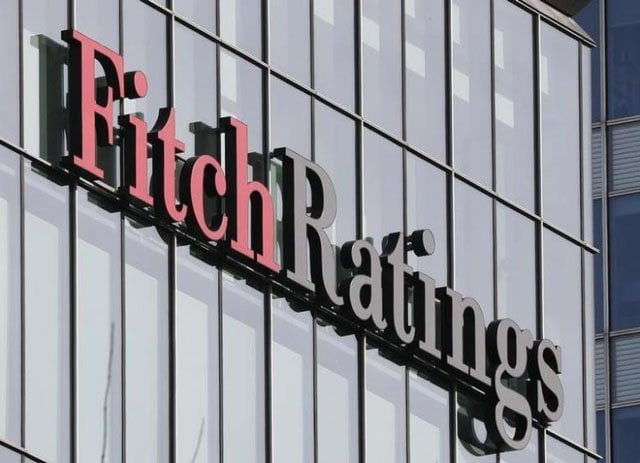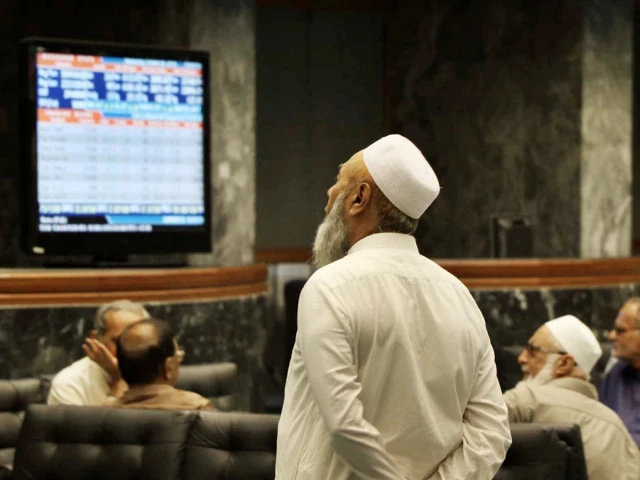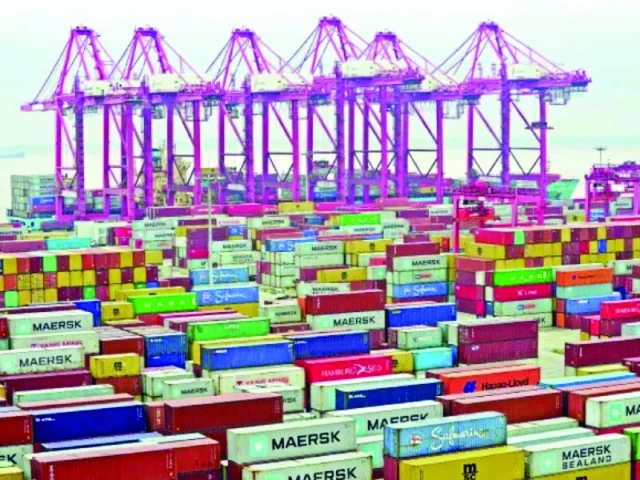Business
Fitch put Pakistan’s debt ratings under review | The Express Tribune

KARACHI:
Fitch Ratings has placed the long-term debt ratings of 25 sovereigns, including Pakistan, Under Criteria Observation (UCO) following an overhaul of its sovereign rating methodology.
The action, announced late Friday, covers 435 long-term sovereign debt instruments and follows the release of Fitch’s updated Sovereign Rating Criteria on September 15, 2025. Although the UCO designation does not represent an immediate change in the ratings, it signals that they may shift once Fitch completes its reassessment under the revised framework within the next six months.
The update introduces loss severity considerations into the assessment of long-term sovereign debt, meaning creditors’ recovery prospects in the event of a default will now play a direct role in determining ratings. Sovereigns with long-term issuer default ratings (IDRs) of B+ or below could see their debt ratings adjusted upward, downward, or equalised depending on expected recovery outcomes. According to Fitch, the recovery rate estimates will be linked to the assignment of Recovery Ratings, making the methodology more consistent with how corporate and structured finance credits are evaluated.
Analysts in Pakistan view the move as technical rather than immediately consequential. Waqas Ghani Kukaswadia, Research Head at JS Global, said Fitch’s criteria change was primarily about recalibrating recovery expectations. “They have made some changes to the recovery expectations and loss severity, based on which they will now issue these ratings. They have changed some rules in estimating loss severity – whether recovery prospects are below average or above average. That’s about it. It is a technical update and apparently has no immediate impact,” he explained.
Even so, the update could have meaningful implications for sovereigns already under financial strain. Fitch noted that long-term debt instruments could be notched up if recovery expectations are “above average”, better, or notched down if expectations are “below average” or worse. Those deemed “average” will be equalised with the issuer’s IDR. While the criteria technically apply across the rating scale, the most visible effects are expected among lower-rated sovereigns – typically frontier and emerging market economies grappling with weak external finances, heavy debt burdens, or limited access to global capital markets.
Countries affected by the UCO placement include Pakistan, Sri Lanka, Egypt, Nigeria, Ghana, Kenya, Ethiopia, and Ukraine, among others. Pakistan’s global sukuk programme has also been specifically flagged as under review. Fitch emphasised that the UCO action does not indicate any deterioration in these countries’ fundamental credit profiles, nor does it alter their current outlooks or rating watches. Pakistan’s sovereign rating was last affirmed at CCC+ earlier this year, reflecting a fragile external liquidity position despite ongoing reforms under the International Monetary Fund programme.
Fitch plans to complete its reassessment within six months, after which the UCO designation will be resolved. Ratings may remain unchanged, be upgraded, or downgraded depending on the final recovery assessments. Market analysts suggest that while investors may not react sharply in the short term, the eventual resolution could influence sentiment toward countries with high debt rollover needs and constrained fiscal positions.
By introducing loss severity into sovereign ratings, Fitch is bringing its approach closer to that already applied in corporate and structured finance sectors, where recovery assumptions are standard practice. Although the methodology update may not carry immediate market consequences, some countries with lower ratings could face movement, either upward or downward, once Fitch applies its new framework in practice.
Business
Does Higher Income Guarantee Faster Wealth? Can You Actually Build Money Faster By Moving To UAE? CA Explains Math

New Delhi: For many middle-class families in India, a particular notion crosses their minds every few months. If people who relocate to the UAE earn more money and if location is a key factor in wealth creation. Chartered Accountant and financial advisor Nitin Kaushik recently sparked a detailed discussion on X by breaking down the actual numbers behind this notion. At the core of his post is a compelling idea that wealth is not created by crossing borders but by crossing comfort zones. Kaushik says that no destination creates wealth and only financial behavior does so.
Kaushik explains how residents working in the UAE often highlight two genuine financial advantages. The first is a lower personal income tax which increases take-home pay. In India, a Rs 2 lakh salary taxed locally may leave Rs 1.55 to 1.6 lakh in hand whereas similar earnings abroad may result in nearly complete take-home. This is due to lower personal income tax abroad. The second factor is a larger monthly savings rate. Many people save between Rs 80,000 and Rs 1.5 lakh per month by sharing accommodation and reducing expenditure. “Same markets. Same funds. Different speeds of wealth creation,” Kaushik wrote.
In the following thread, Kaushik explains in detail how geography has little bearing on wealth creation and how savings discipline does all the magic. He claims that while earning Rs 2 to 3 lakh domestically, several professionals save less than Rs 30,000 per month due to lifestyle inflation, large EMIs and premium living costs. Building Rs 1 crore at this pace will take 15 to 18 years even with strong market returns. “The contrast is not country-based and it is cash-flow based,” Kaushik said.
Kaushik claims that increased income does not ensure faster wealth. A Rs 3 lakh earner saving Rs 1 lakh builds wealth more quickly than a Rs 5 lakh earner saving Rs 40,000. What matters is the investable surplus and not the salary figure, he said.
“Is wealth really about where you work – or what you do with what you earn?”
Every few months this thought pops up in thousands of middle-class homes:
“People who go to UAE build money faster_
Is location the secret?”The truth is more layered than that – and it deserves an_ pic.twitter.com/50uByLnd8h
— CA Nitin Kaushik (FCA) | LLB (@Finance_Bareek) December 23, 2025
According to Kaushik, when expenditure is smaller than income then investing happens almost automatically. The same financial outcome can be achieved at home with modest lifestyle control, aggressive monthly SIPs, consistency across market cycles and zero dependency on “windfall thinking”.
Kaushik said that the real wealth calculation does not consider geography. Income minus expenses becomes investable capital and investable capital multiplied by time becomes net worth. “Change any one variable and the future changes,” the CA wrote.
Kaushik said, “Wealth is not built by crossing borders. It is built by crossing comfort zones. Whether earnings come from here, there or anywhere what changes lives is the habit of paying the future first.”
According to Kaushik, moving abroad may increase savings capacity but discipline alone converts earnings into freedom. In Kaushik’s words, “No destination creates wealth. Only financial behavior does.”
Business
Income Tax Refund Delay: I-T Department Sends Bulk Texts, Says Refunds On Hold

Last Updated:
News18
Income Tax Refund 2025: Several taxpayers on the internet have, over the past few day,s alleged that they have received an email and/ or SMS from the Income Tax Department, saying that their ITR refund has been put on hold due to ‘mismatches’ in their ITR filing.
“Processing of the said return was held as it was identified under risk management process on account of certain discrepancies in the claim of refund. An email with details has also been sent to your registered email address,” the message sent to taxpayers typically reads, according to multiple screenshots shared on social media platforms by users.
December 24, 2025, 11:34 IST
Read More
Business
CBDT Asks Tax Filers To Review, Revise Returns Before 31 December To Avoid Penal Consequences

New Delhi: The Central Board of Direct Taxes (CBDT) has said that it is launching the second Nonintrusive Usage of Data to Guide and Enable (NUDGE) campaign, under which SMSs and emails will be issued from 28th November 2025 to such taxpayers, advising them to review and revise their returns on or before 31st December 2025 to avoid penal consequences.
The campaign aims to facilitate correct reporting in Schedule Foreign Assets (FA) and Foreign Source Income (FSI) in ITRs. Accurate and complete disclosure of foreign assets and incomes a statutory requirement under the Income-tax Act, 1961, and the Black Money (Undisclosed Foreign Income and Assets) and Imposition of Tax Act, 2015.
Adopting a PRUDENT approach to tax administration, CBDT utilises advanced data analytics to simplify compliance processes, reduce information asymmetry and reinforce a transparent and trust- oriented interface with taxpayers. The initiative aligns with the vision of Viksit Bharat, fostering accountability, transparency and a culture of voluntary compliance.
CBDT has advised all eligible taxpayers to utilise this opportunity to ensure complete compliance with statutory reporting requirements. For further information on CRS, FATCA, Schedule FAandSchedule FSI, taxpayers may refer to the official website www.incometax.gov.in
CBDT said analysis of Automatic Exchange of Information (AEOI) information for FY 2024-25 (CY 2024) has identified high-risk cases where foreign assets appear to exist but have not been reported in the ITRs filed for AY2025- 26.
The first NUDGE campaign, launched on 17th November 2024, targeted select taxpayers who had been reported by foreign jurisdictions under the Automatic Exchange of Information (AEOI) framework as holding foreign assets that were not disclosed in their Income Tax Returns (ITRs) for AY 2024-25. The initiative yielded positive outcomes, with 24,678 taxpayers (including several not directly nudged) revisiting their returns and disclosing foreign assets amounting to Rs 29,208crore, along with foreign-source income of Rs 1,089.88 crore.
CBDT receives information relating to foreign financial assets of Indian residents from partner jurisdictions pursuant to Common Reporting Standards (CRS) and from the United States under the Foreign Account Tax Compliance Act (FATCA). This information assists in identifying potential discrepancies and guiding taxpayers towards timely and accurate compliance.
-

 Business1 week ago
Business1 week agoStudying Abroad Is Costly, But Not Impossible: Experts On Smarter Financial Planning
-

 Fashion6 days ago
Fashion6 days agoIndonesia’s thrift surge fuels waste and textile industry woes
-

 Business6 days ago
Business6 days agoBP names new boss as current CEO leaves after less than two years
-

 Business1 week ago
Business1 week agoKSE-100 index gains 876 points amid cut in policy rate | The Express Tribune
-

 Sports1 week ago
Sports1 week agoJets defensive lineman rips NFL officials after ejection vs Jaguars
-

 Tech6 days ago
Tech6 days agoT-Mobile Business Internet and Phone Deals
-

 Sports6 days ago
Sports6 days agoPKF summons meeting after Pakistani player represents India in kabaddi tournament
-

 Entertainment1 week ago
Entertainment1 week agoPrince Harry, Meghan Markle’s 2025 Christmas card: A shift in strategy











